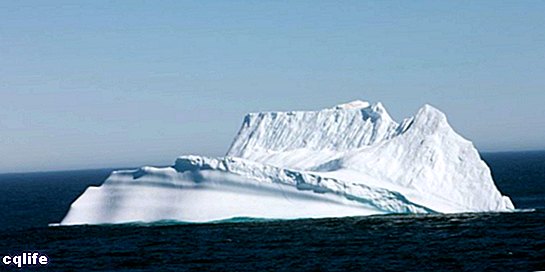We explain what an iceberg is and the danger that this mass of ice represents. Also, how it is formed and some of its characteristics.

What is an iceberg?
It is known as an iceberg (from English) or floe to a large mass of floating ice in the ocean, detached from a glacier or an ice pack, and that presents a portion outside the Water, while the rest remains submerged.
Icebergs come from the polar region of the planet, where they were part of an icy mass (ice pack) that, due to fractures and various causes, cracks and releases its fragments into the current. This is how these large pieces of ice get to latitudes media, where they represent a danger to maritime navigation, as demonstrated by the sinking of the famous Titanic.
Since this famous tragedy in 1912, numerous icebergs have been observed to break off Antarctica, washed away by the Labrador Current.
In 1974 the detachment of one the approximate size of the island of Manhattan was reported, although it did not manage to leave the pole due to the drift current. Another huge iceberg of proportions similar dislodges in 2017, which was interpreted as clear evidence of the global warming.
Icebergs contain tons of fresh water in solid form, as well as frost and snow from the atmosphere. It is estimated that most of their mass remains submerged (only one eighth protrudes), so it is difficult to calculate with the naked eye where they really start.
Due to the density from the salt water of the oceanThese ice masses remain afloat and can be swept away by the current, despite their colossal size. Eventually the temperatures warmer in the south melt them and add an important volume of fresh water to the ocean. The place in the world where the most icebergs are produced is Greenland.
